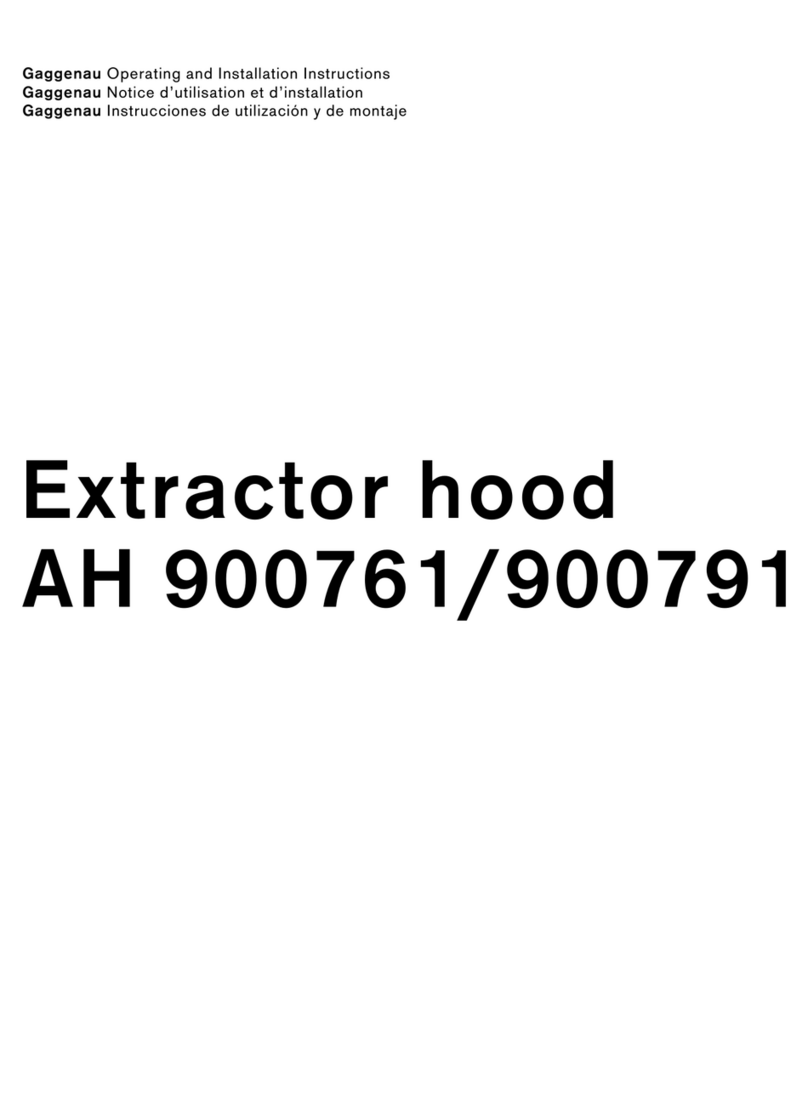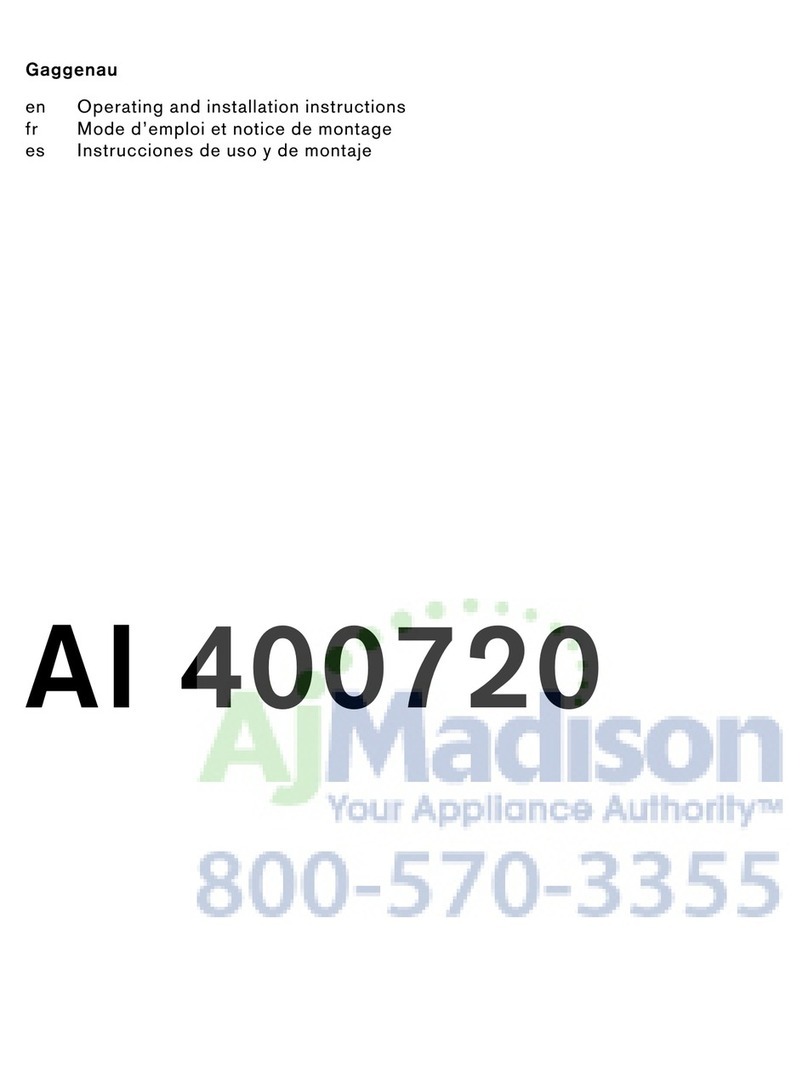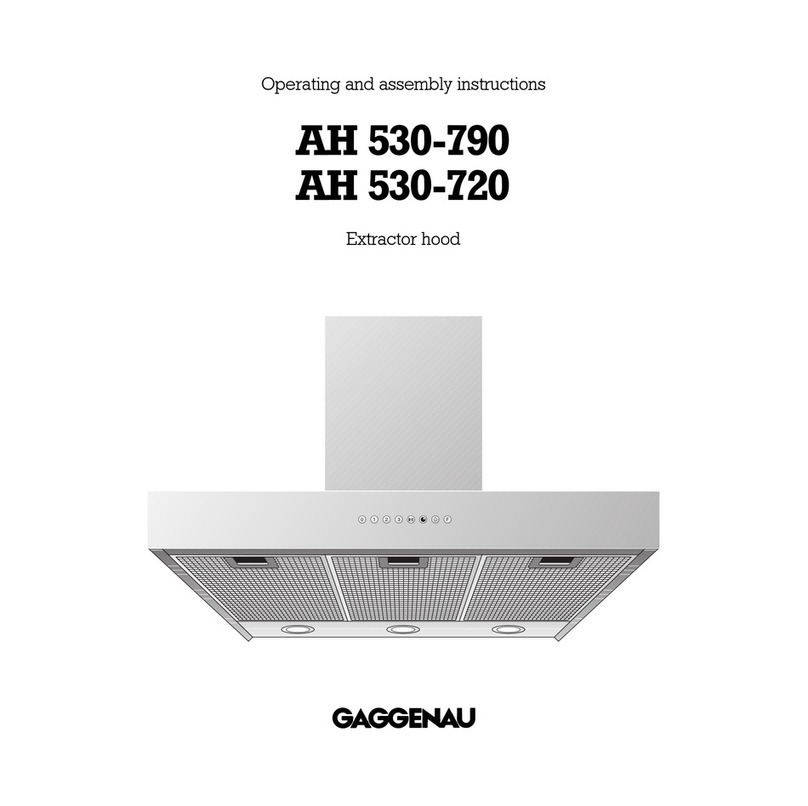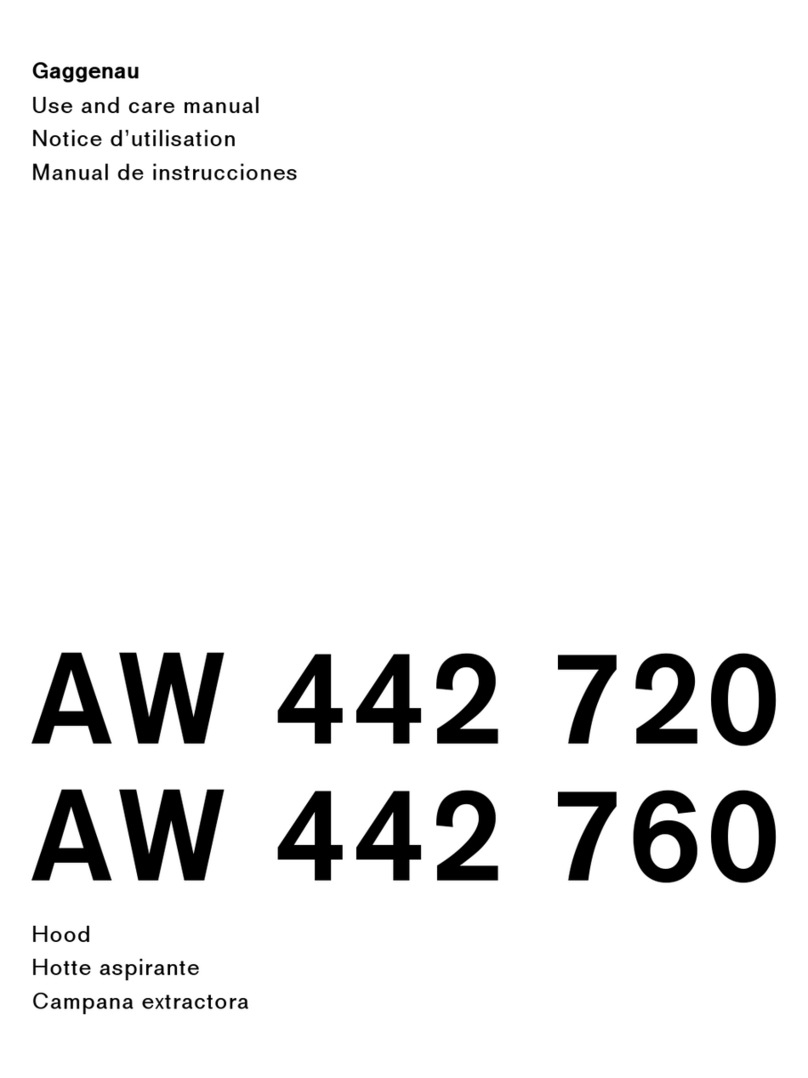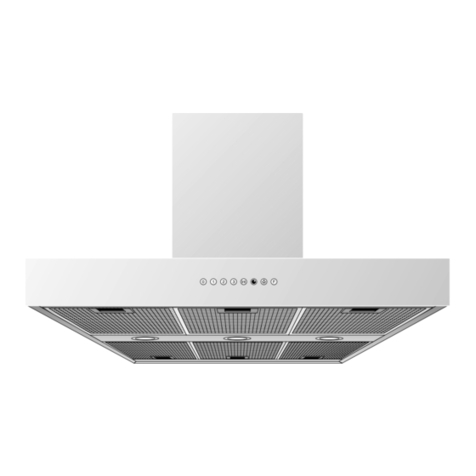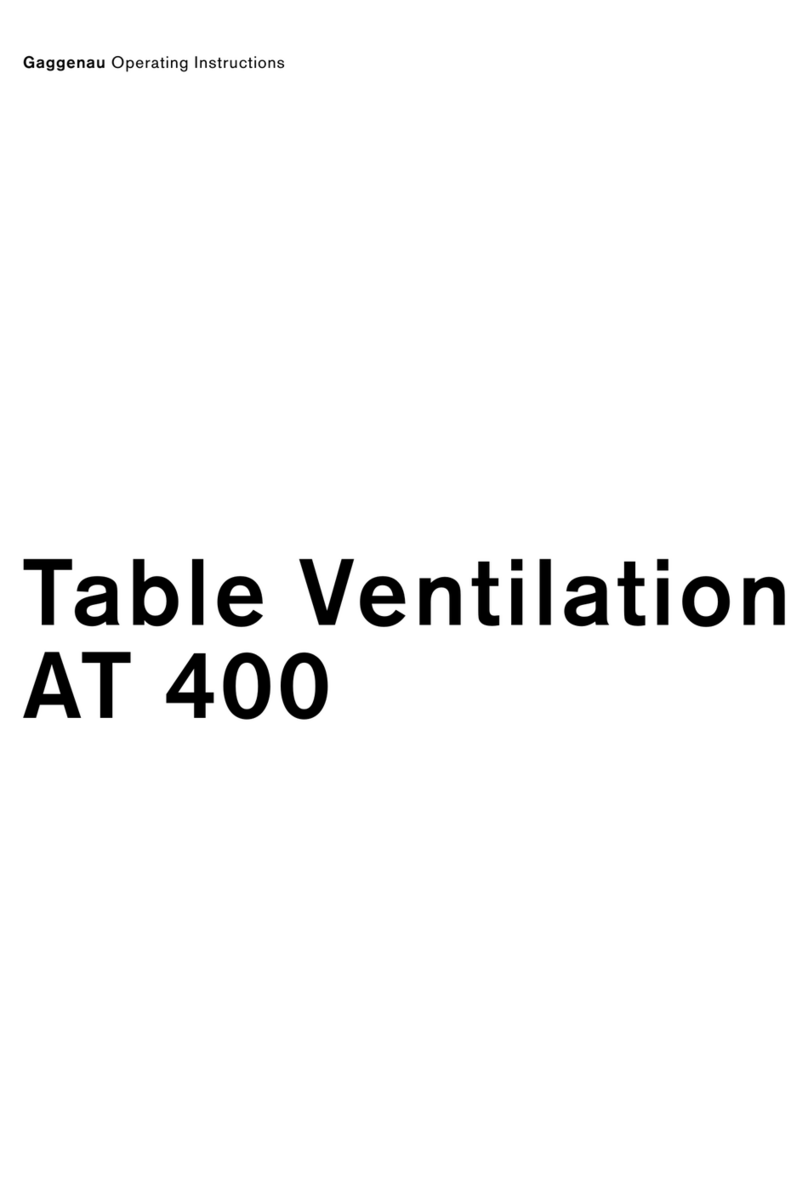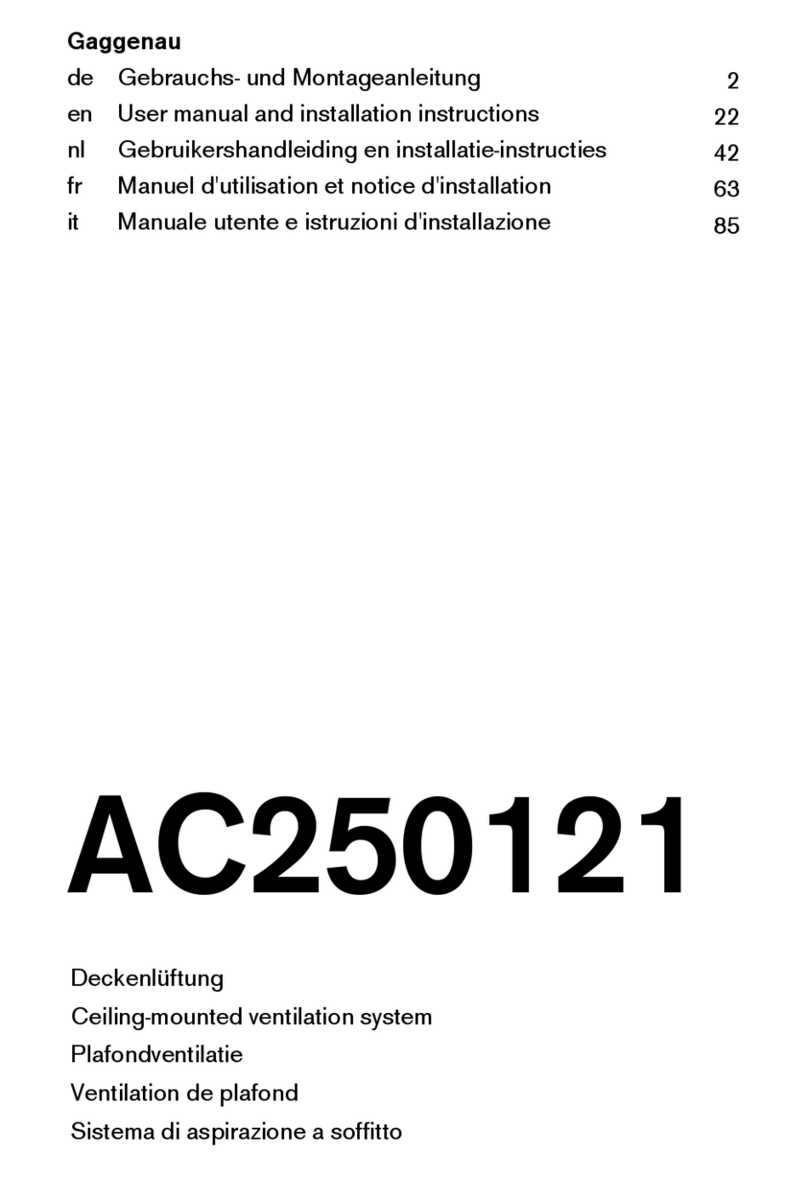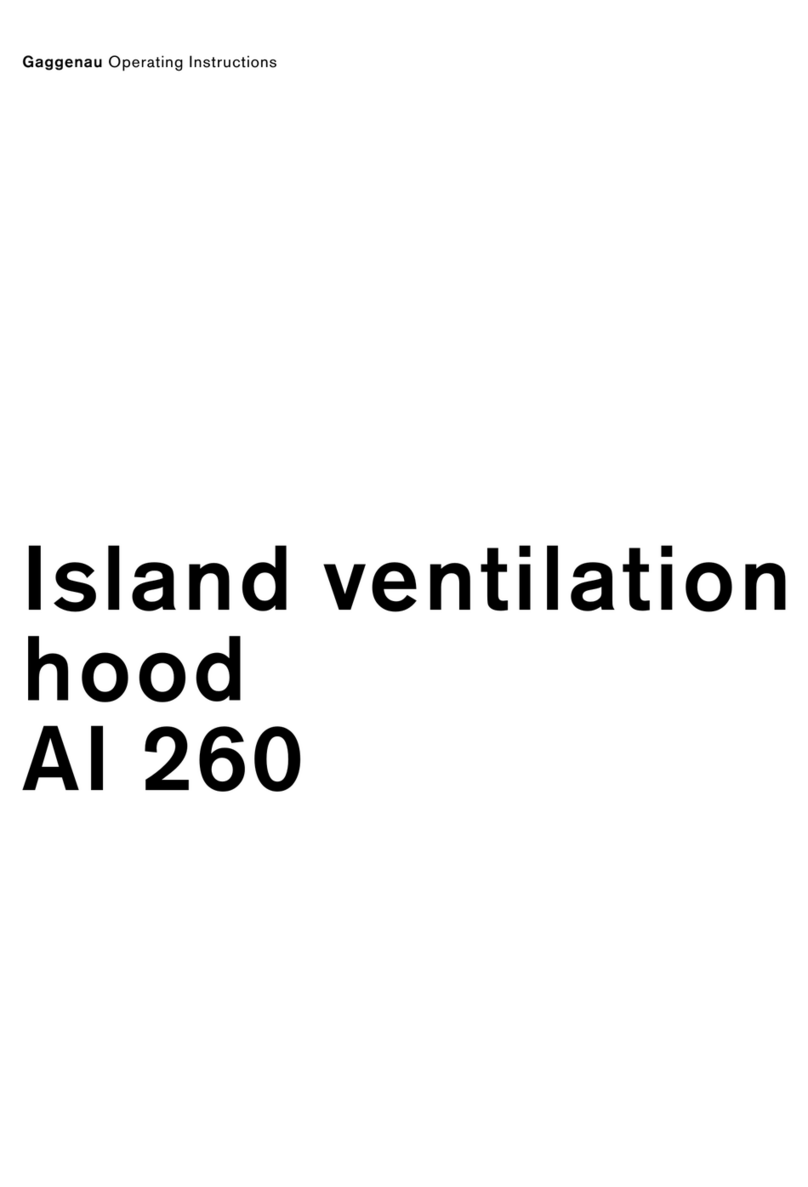4
1. I portant notes
1.1 For your safety
–Damaged appliances ust not be operated.
– The appliance ust only be connected by an
authorised specialist, paying attention to
the relevant regulations of the power supply
co panies and the regional construction
regulations.
lso observe the assembly instructions!
–Connecting cables ust not co e into contact
with hot cooking surfaces.
–Do not operate the extractor hood without
inserted la ps.
– Never operate the appliance without a grease
filter.
–Hazardous or explosive substances and
vapours ust not be extracted!
–The user is responsible for expert use and the
perfect condition of the appliance.
– Only ever operate the appliance under super-
vision.
–Caution! Over-greased filters are a fire risk!
Only ever deep-fry under the extractor under
constant supervision. Pay attention to cleaning
the grease filter on a regular basis.
–Fire risk! Do not fla bé eals under the
extractor hood!
– Operation of the extractor hood above a hearth
for solid fuels (coal or wood etc.) is only partly
per itted.
–Gas appliances ay only be used under the
extractor hood when pots and pans are placed
on the !
– When using more than 3 gas-operated rings
at the sa e ti e, please operate the extractor
hood at level 2 or higher. This prevents a build-
up of heat in the appliance.
–Do not place any heavy objects on the appli-
ance; this will have a detri ental effect on
functioning.
–Do not clean the appliance with a stea
cleaning apparatus or with water pressure
because this poses a risk of short-circuits.
– Isolate the appliance fro the ains during
every maintenance operation. To do this,
actuate the corresponding fuse.
–Repairs ust be carried out by authorised
specialists, thus ensuring electrical safety.
–No warranty claims can be lodged in the
event of damage caused by failure to observe
these instructions.
– Adequate inco ing air ust be ensured if a
wood, coal, gas or oil heater or an open hearth is
operated in the sa e roo as the one in which
the hood is installed.
– Safe operation is possible whenever the partial
vacuu in the place where the firing equip-
ment is installed does not exceed 4 Pa
(0.04 bar). This can be achieved whenever
the air needed for co bustion is able to enter
through openings that cannot be sealed, for
exa ple in doors, windows, inco ing/exhaust
air wall boxes or other technical eans.
– If the appliance is to be operated only with the
window open (to ensure adequate inco ing
air), you can use the window switch.
A switch (nor ally open) is fitted on the window.
On the appliance, this switch is connected to the
window switch ter inal on the ain electronics.
The appliance can now only be operated when
the window is open.
Important: the window switch ust only be
connected by an authorised specialist.
Note: The light function works without
restriction.
–fter a power failure, the extactor will not go
on again auto atically. You can reco ence
operation by turning a knob or by pressing any
key.
Technical modifications reserved.























